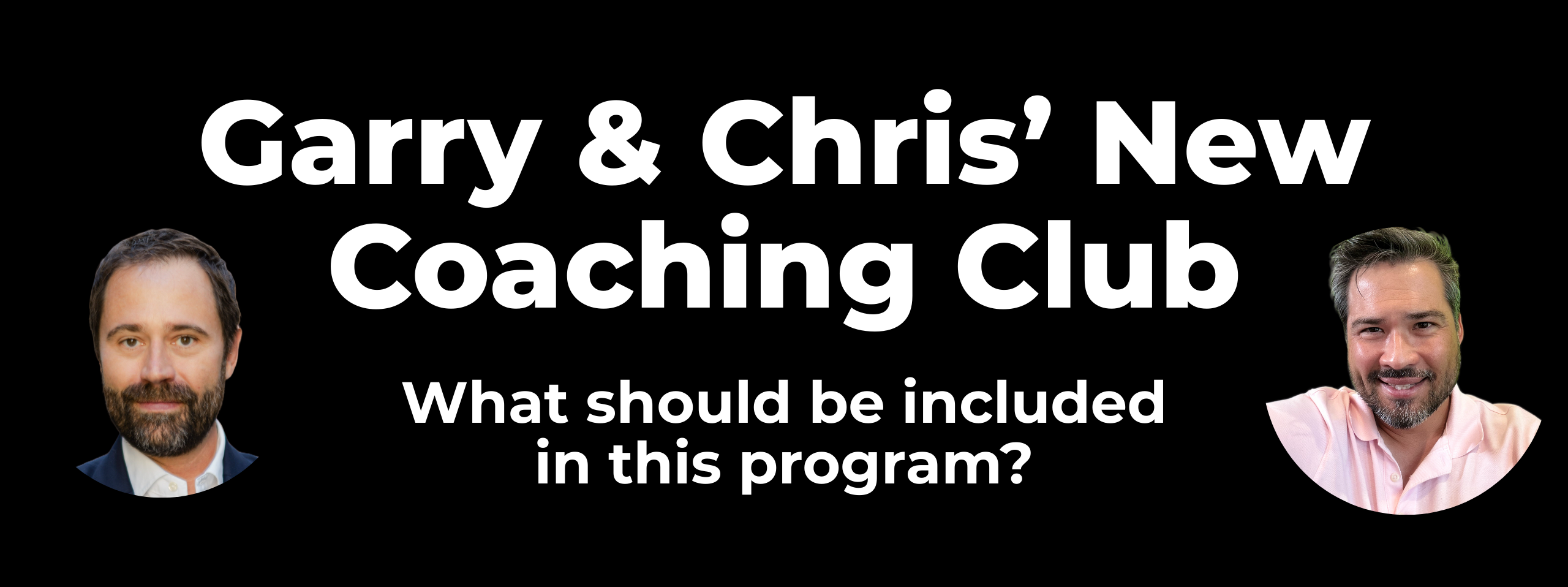
CRM stands for “Customer Relationship Management,” and over the years real estate agents have used a variety of tools to manage and track their client relationships. In the old days, we used a Roladex and handwritten notes. Then we migrated to a Microsoft Excel spreadsheet, which gave us an enhanced ability to organize and sort our contacts.
However, these “old school” tools can’t begin to compare to the power and capabilities offered by the CRM software systems on the market today.
There are a number of excellent CRM options, many of which are customized for the needs and uses of real estate agents. We personally use Realvolve in our brokerage, GoodLife Realty, and we recommend it to Paperless Agent Coaching Club Members, as well.
WHY DO I NEED A CRM?
The pillars of a successful real estate business include: serving your current clients with excellence, sales and marketing to bring in new clients, and good record keeping. All three of these can be enhanced through the proper use of a CRM system.
Additionally, a CRM offers:
- Portability: Access your client data from anywhere using a tablet or smartphone.
- Automation: Save time and prevent missed deadlines by creating “workflows” to automate routine processes.
- Intelligence: No more searching emails, text messages and file folders to track down documents or past conversations. A CRM serves as a central repository for all of your records and client communications.
Investing in a CRM system for your real estate business, if used correctly, will pay for itself many times over. It will save you time and energy, prevent missed opportunities and deadlines, and ensure consistent outreach to your clients and contacts to produce a steady flow of new business.
OPTIMIZING YOUR CRM
Like most technology on the market, there can be a steep learning curve when it comes to using a new system, discovering the best ways to implement it into your existing business practices, and maximizing the features and benefits offered.
That’s why we’ve outlined our recommendations for CRM best practices in five categories:
- Building Your Database
- Organizing Contacts
- Managing Relationships
- Staying in Touch With Your Network
- Automating Follow Up Campaigns
We’ve developed these over our two decades in the real estate business and use them in our own brokerage. Whether you have an existing CRM software system, or are considering implementing one in your business for the first time, these practices will help ensure you’re utilizing this powerful tool to its full capacity.
-
Building Your Database
One of the first questions most agents ask when implementing a new CRM is, “Who belongs in my database?”
The short answer is, everyone you know. This includes:
- Past Clients
- Current Clients
- Personal Friends and Acquaintances
- Business Owners
- People in Your Professional Network
- Leads
-
Organizing Contacts
Once you have imported your contacts into your CRM, you will need to implement a system to organize them. We recommend giving each contact both a Letter Grade and a Status.
Keep in mind that there are four stages in cultivating a relationship with your contacts:
Aware > Know > Like > Trust
Some agents will spend too much of their time on the “Aware” and “Know” stages, while neglecting to move contacts through to the”Trust” stage. Others will only focus on reaching out to past clients and friends and neglect filling their pipeline with new leads. By categorizing your contacts you can ensure you’re bringing in new leads and moving them through the relationship stages using targeted outreach appropriate for each stage.
Letter Grade Categories (adapted from Brian Buffini)
The primary goal of giving your contacts a Letter Grade is to garner referrals or repeat business. By categorizing your contacts, you can better determine the method and frequency of communication.
- A+: People you know well and who have sent you multiple referrals
- A: Current clients or anyone who has sent you at least one referral
- B: Someone who would probably refer you if asked, including past clients who have never sent a referral
- C: Anyone who might use you or refer you in the future
The goal is to move “C” contacts to level “B,” and “B” contacts to level “A” by building trust and asking for referrals.
Status Categories
Status categories are used to track contacts who have shown interest in buying or selling a property. The goal is to move them down the list through targeted outreach customized for each stage.
- Suspect: These are typically online leads. For example, someone who has given their contact information in exchange for a free report or registered on your website to search for properties.
- Prospects: Someone who has been a Suspect and has “raised their hand” to request more information.
- Lead: These people have indicated that they are interested in buying or selling real estate now.
- Client: Someone who has signed a listing or buyer representation agreement.
- Past Client: Someone who has closed a transaction with you as their representative.
With advancements in technology that allow you to automate your follow up, there’s little need to limit your network. As long as your recipients are still answering your phone calls, or opening your emails and clicking on links, they are showing interest in you and the value you provide. Some relationships will take longer to cultivate than others, but could pay off months, or even years, down the road.
-
Managing Relationships
Just like a vegetable garden, you need to constantly maintain your database for optimum output. If you neglect it for a few weeks, the weeds will start to take over and it will seem overwhelming to clean up. And just like a garden, if you neglect your contacts, your real estate business will suffer and eventually start to die.
We suggest using your CRM to perform these activities each day (or at a minimum once per week):
- Manage Current Clients
- Follow up, schedule calls, emails, appointments, review and update notes.
- Keep detailed notes on transactions.
- Use workflows to make sure no balls are dropped, especially if you don’t have a transaction manager.
- Manage Transactions
- See what needs to be completed each day and ensure deadlines are met.
- Communicate with all parties involved.
- Provide client updates.
- Reach Out to 10 Contacts
- Ten is an arbitrary number; you should be calling your contacts once per quarter, so set a daily goal that helps you achieve this outcome.
- Take the opportunity to ensure the contact record is complete, accurate and up-to-date.
- If you can’t get someone on the phone, leave a voicemail or make another type of connection (i.e. comment on their social media profile, send them a handwritten note, etc.).
By implementing these activities into your regular business routine, you will ensure the continued health and growth of your relationships and your business.
-
Staying in Touch With Your Network
At first, it may seem overwhelming to make 10 phone calls each day. But if you only reach out to your database through generic emails, you’re not going to get to (or remain in) the “Like” and “Trust” relationship stages.
At GoodLife Realty, we developed a Network Campaign Map to ensure we’re reaching out to our database on a regular basis with valuable information that showcases our real estate expertise:
Publish Blog Post > Send PDF version in an Email >
Call Network > Document Conversations > Social Post
The #1 reason most Realtors won’t pick up the phone and call a contact is they have nothing to say. It helps to send out something of value to your contacts so you have a reason to follow up. That’s why each month we feature a substantive, well-researched blog post (approximately 2000 words), which we then convert into a PDF report. We email it out to our network and share it on social media. This gives us a reason to call those contacts in our database who we haven’t spoken with in 90 days. It also reinforces our status as experts in real estate.
Paperless Agent Coaching Club Members get access to our done-for-you Monthly Digital Marketing Campaigns, which makes this process easy and foolproof. It includes:
- Blog post
- LinkedIn post
- Professionally-designed PDF newsletter
- Copy and graphics for sharing on social media
- Email template and follow-up script for outreach to your database
If you’ve connected with your contacts and past clients on social media, you can also check their profiles to see if anything is happening in their lives that you could mention on your call, as well. Be sure to document the conversation in your CRM, and review what you talked about last time before you call. It can make a huge impression when you recall personal details from a past conversation.
-
Automating Follow Up Campaigns
Whenever you can automate a process, you not only save time and effort, you ensure it gets completed. A CRM enables you to automate your follow up to Suspects and Prospects so you’re not missing out on opportunities … but you’re also not using up valuable time on the phone with people who may be months (or even years) away from buying or selling a home.
By putting them into an automated email sequence, you can gauge their level of interest before picking up the phone. Are they opening your emails? Clicking on your links? Requesting more information? If so, their status may move from Suspect/Prospect to Lead and warrant additional attention.
With all the benefits automated follow up sequences offer, why don’t more agents use them?
- They don’t have a system.
- They don’t know what to say.
- They don’t have the time or resources.
Most Realtors aren’t professional marketers or copywriters, and it isn’t cheap to hire one. This creates a roadblock for agents in following up with prospects.
At GoodLife Realty, we do have an in-house marketing team and they created an 11-point email sequences for our buyer and seller leads. Paperless Agent Coaching Club Members have access to the entire sequences for both buyers and sellers, from which we’ve shared a sample below:
Seller Email Sequence Email #1:
Subject: The 3 Ps of Increasing your Home’s Resale Value
Hi ______,
Since you were curious about your home’s value, I wanted to give you some tips on how you can increase your resale value.
The best way to get more for your home is to work on the 3 Ps of home sales:
- Preparation – getting the right things ready so buyers will value your home’s features.
- Price – pricing your home to avoid Limbo Land, a place where homes sit on the market indefinitely.
- Promotion – marketing your home to get your home found online and generate buyer interest.
At our brokerage, we work with home sellers to implement the 3 Ps and sell homes for 3.5% higher than the average real estate agent.
If you’d like to learn more about the 3 Ps of home selling and how we can help you, just reply to this email so we can set up a time to chat. Thanks!
[Signature]
We have automated our 11-point sequence to deliver emails to Suspects and Prospects on a predetermined schedule. Those who interact with our emails are prioritized for follow up calls from one of our agents.
GAIN THE COMPETITIVE ADVANTAGE
You’ll be amazed at the opportunities that will present themselves when you initiate contact with your network. Referrals will come in, repeat business will occur and prospects will turn into clients.
Be the agent who responds quickly, sends valuable information on a consistent basis, and calls regularly to check in on past clients. Chances are, your competition isn’t doing it. And even if they are, with the right tools and systems in place, you can do it better.
Besides a CRM, what tools or technology have you found invaluable to your business? Share them in the comments below!




Great post! I am actually getting ready to across this information, is very helpful my friend. Also great blog here with all of the valuable information you have. Keep up the good work you are doing here.